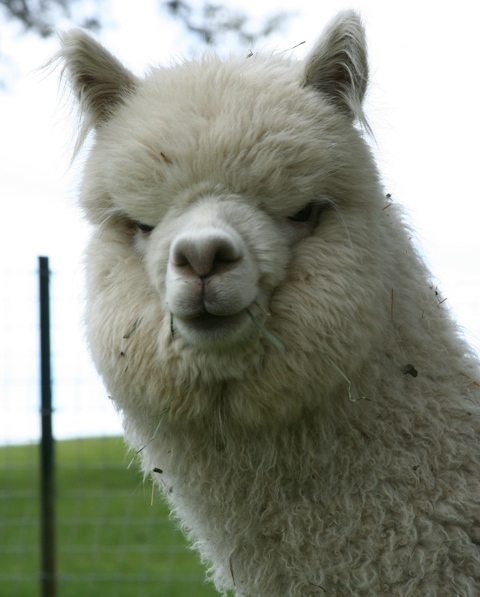
.JPG)
Alpacas are one of the world`s gentlest and most endearing creatures. A defenseless animal and a herbivore, their strength and their comfort rest within the herd. They are curious and intuitive with unique and individualized personalities. For the herdsman in South America at 10,000 Ft. and above, they are a staple of life providing fleece to make clothes and blankets from. Or as an alternative they sell the fleece to the mills as a source of revenue.They also burn their dung in the stoves to keep the home warm and they are a source of food. But to us here in the United States and other countries around the world they are strictly a fleece producing creature and the World`s Finest Livestock Investment. The alpaca comes in 22 different colors, an important attribute to acknowledge for both fleece production and for our show ring. Their are two breeds that make up the alpaca. The huacaya has a fleece which grows perpendicular to the skin and is recognized by it`s crimp. The huacaya also makes up about 90% of the world`s alpaca population. The much rarer suri alpaca has a fleece which lays down on the flank of the alpaca and forms long ropes. Each style of fleece is selected for improvement with an emphasis considered for different traits more desirable to the pertinent breed.
The alpaca lives for 15 to 20 years normally and is reproductive most of their lives. The females produce one cria (baby alpaca) per year with twins being an oddity. The gestation time for the baby is 11 to 11.5 months and most cria born will weight in at 15 to 20 pounds. The average adult alpaca weighs in between 125 and 175 lbs and stands 32 to 38 inches at the withers. Mothers suckle their cria for about 6 months and are usually pregnant again 2 or 3 weeks after they give birth. The alpaca is shorn annually (usually in the Springtime). Toenails are trimmed several times a year and depending on your region, a worming schedule is recommended.